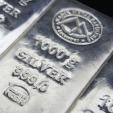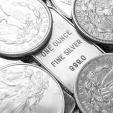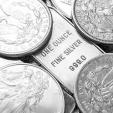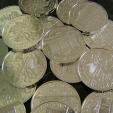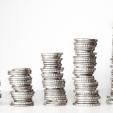Silver Is Where the Action Is Now: Here's Why...
Gold has seen a pretty decent pullback here the last couple of days, mostly on optimism surrounding trade deals between the U.S. and other nations – namely Japan and with the EU. The yellow metal is off close to $100 from where it was earlier in the week and currently checks in at $3,342, good for a modest 0.6% decline week-over-week.
As for silver, the story is similar. Silver is $1 lower than its early-week high but since last Friday’s close is down a slight 0.2% to check in at $38.30 an ounce as of this Friday morning recording.
The PGMs are also in negative territory as well, with platinum coming in at $1,414 – off 2.2% for the week, while palladium is checking in at $1,246, also down 2.2% since last Friday’s close.
Surges in the gold-to-silver ratio above 100 in both March 2020 and April 2025 preceded powerful silver rallies – and if the 2020 analog holds, even more silver gains are ahead.
Silver has come a long way since the bleak days of early April.
That was when silver, along with most financial markets, plunged following President Donald Trump’s surprising ‘Liberation Day’ tariff announcement. Silver sank a staggering 21% in just three trading sessions – a move that was both shocking and disheartening for precious metals investors.
Yet even then, we saw a glimmer of hope in the parallels with the early 2020 COVID lockdowns, which initially caused panic but ultimately sparked a powerful silver rally to seven-year highs.
But silver recently broke out above its long-standing $32 to $35 resistance zone – a ceiling that held firm for over a year, from May 2024 to June 2025. This breakout marks what Money Metals columnist Jess Colombo says is the official start of silver’s next major bull market – on track to target $50 and possibly higher in the months ahead.
The long-term gold-to-silver ratio dating back to 1915 averages 53, making the current reading of 87.3 still extremely elevated by historical standards.
Using some rough math, if gold remains at its current spot price of $3,342 and the ratio returns to its historical average of 53, that would imply a silver price of $63.06 – a remarkable gain of about 65%. And that’s assuming gold doesn’t rise any further.
If gold continues to climb, as we expect it will, then the upside potential for silver grows even larger. Our expectation is for gold to reach at least $15,000 an ounce within the next five to ten years, driven by a severe global debt crisis and an eventual financial reset.
If gold does reach that figure, and the gold-to-silver ratio returns to its historical average of 53, that would imply a silver price of $283 – an astonishing 639% gain from current levels.
Silver is certainly having a good year, but so is gold.
The yellow metal was up nearly 26 percent through the first six months of 2025, ranking as the top-performing asset class.
This booming performance continued the momentum built in 2024 when gold surged by 27.5 percent.
After recording 40 all-time highs in 2024, gold set another 26 all-time highs through the first six months of this year. In April, gold cracked the $3,500 level for the first time. It also set a record in inflation-adjusted terms.
Gold outperformed every other major asset class. Developed market stocks (excluding the U.S.) came in second place, rising by about 19 percent.
Several factors drove gold’s continued bull market through H1, including a weak U.S. dollar, range bound yields with expectations of more Federal Reserve rate cuts by the end of the year, and heightened geopolitical tensions, including trade turmoil and several military conflicts.
Continued central bank gold buying and more general de-dollarization also supported gold through the first half of 2025.
The dollar charted its worst start to a year since 1973. In fact, one could argue that it’s not so much that the gold is going up but that the greenback is sagging. Gold is reflecting the devaluation of the U.S. currency.
There also appears to be a developing bear market in bonds. U.S. Treasuries have historically been a go-to safe-haven asset. However, Treasury yields increased as bonds sold off in April at the height of geopolitical uncertainty.
While the final numbers aren’t in, preliminary data indicates gold demand was strong in H1, spurred by and supporting the price rally.
The World Gold Council reported increased trading activity across over-the-counter markets, exchanges, and ETFs. Average trading volumes in H1 hit $329 billion per day, the highest semi-annual number on record.
Gold has generally been trading sideways in a consolidation phase since April. Frequent Money Metals podcast guest Jordan Roy-Byrne is a renowned technical analyst who specializes in long-term trends. He recently said it appears the yellow metal is setting up for another run higher next year.
Through the second half of the year, the World Gold Council forecasts, “Gold may move sideways with some possible upside – increasing an additional 0 percent to 5 percent in the second half.” Of course, this could change based on possible economic scenarios.
********






 Mike Gleason is a Director with
Mike Gleason is a Director with 